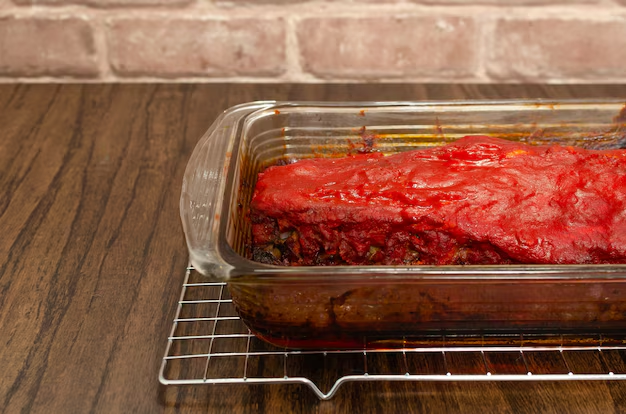How Long Can You Keep Gravy Fresh in the Refrigerator?
The scent of homemade gravy can evoke cherished family memories and transform an ordinary meal into a feast. But once you're done with your delicious creation, a question arises: How long is gravy good in the refrigerator? This guide delves into the essentials of storing gravy, ensuring it remains fresh and safe to consume while maintaining its rich, savory flavor.
Understanding Gravy and Its Ingredients
What is Gravy Made Of?
Gravy, a staple in many households, primarily consists of meat drippings, flour, and broth or milk. Each ingredient plays a crucial role:
- Meat Drippings: Provides a robust base flavor.
- Flour or Cornstarch: Acts as a thickener.
- Broth/Milk: Liquid base that determines the consistency and richness.
These components collectively determine gravy's shelf life once refrigerated.
Why Ingredients Matter for Storage
Different ingredients impact how long gravy can last. For instance, dairy-based gravies might spoil faster than those made with broth due to the higher perishable nature of milk. Understanding these nuances helps in predicting and managing freshness.
Proper Storage Techniques for Gravy
Cooling Down Gravy Safely
Before refrigerating, ensure your gravy is cooled to room temperature. Here's how you can do it safely:
- Use Shallow Containers: Divide between shallow dishes to speed the cooling process.
- Refrigerate Promptly: Do not leave gravy at room temperature for more than two hours.
Choosing the Right Container
Storing gravy properly means selecting the right container to maintain freshness:
- Airtight Containers: Prevent external odors and bacteria from affecting the gravy.
- Refrigerator-safe Materials: Glass or BPA-free plastic can help retain taste and prevent chemical leaching.
Optimal Shelf Life in the Fridge
Gravy typically lasts 3 to 4 days in the refrigerator. This timeframe ensures flavors remain intact without risk of spoilage. Beyond this, the risk of bacterial growth increases, potentially making the gravy unsafe to consume.
Recognizing Spoiled Gravy
Signs of Spoilage
Identifying spoiled gravy is crucial to prevent foodborne illnesses. Look for:
- Unpleasant Odor: Sour or off smells indicate bacterial activity.
- Texture Changes: Excessive separation or lumps suggest spoilage.
- Visible Mold: Any mold growth means the gravy is no longer safe.
What to Do With Spoiled Gravy
If your gravy shows any of these signs, it's best to discard it to avoid any health risks. Do not attempt to salvage it by reheating, as this won't remove potential toxins.
Extending Gravy's Shelf Life
Can You Freeze Gravy?
Yes, freezing is a viable option to extend the life of gravy. Here's how to do it effectively:
- Allow to Cool: Ensure gravy is at room temperature before freezing.
- Use Freezer-safe Containers: These prevent freezer burn and preserve flavor.
- Portion Control: Freeze in small portions, so you only defrost what you need.
Best Practices for Thawing and Reheating
- Thaw Slowly: Move frozen gravy to the refrigerator 24 hours before use.
- Reheat Properly: Heat on the stove, stirring continuously, until it reaches a rolling boil to kill any potential bacteria.
Related Topics in Food Storage
Storing Other Sauces and Condiments
Gravy isn't the only kitchen staple that requires careful storage. Understanding similar techniques for other sauces can enhance your culinary efficiency and safety:
- Tomato Sauce: Best stored in glass jars, it lasts up to a week.
- Mayonnaise: Requires refrigeration once opened to ensure longevity.
- Soy Sauce: Though shelf-stable, refrigeration maintains its flavor profile over time.
Benefits of Proper Food Storage
Investing in effective storage methods not only ensures safety but also improves your culinary experiences:
- Reduces Waste: Maximizes the use of leftovers, decreasing food wastage.
- Enhances Flavor Retention: Preserves the intended taste and aroma of dishes.
- Promotes Health: Prevents the consumption of spoiled or unsafe foods.
Key Takeaways and Practical Tips
Handy Tips for Gravy Lovers
Here's a quick reminder of how to handle and store gravy effectively to keep it fresh and flavorful:
- 🚫 Avoid leaving gravy at room temperature for long to prevent bacterial growth.
- ❄️ Freeze extra gravy if you don't plan to use it within four days to extend its shelf life.
- 🔍 Regularly check refrigerated gravy for signs of spoilage like odor and mold.
- 🥄 Use glass or BPA-free plastic containers for both refrigeration and freezing.
Remember, smart storage doesn't just safeguard your meals but also contributes to healthier eating habits and sustainable food practices.
By understanding the intricacies of gravy storage, you're equipped to savor this beloved condiment with confidence. Whether you're preparing a typical weeknight dinner or a festive holiday feast, these practices ensure your gravy is always ready to elevate the dining experience. Embrace these food storage insights, and enjoy your meals with peace of mind!
